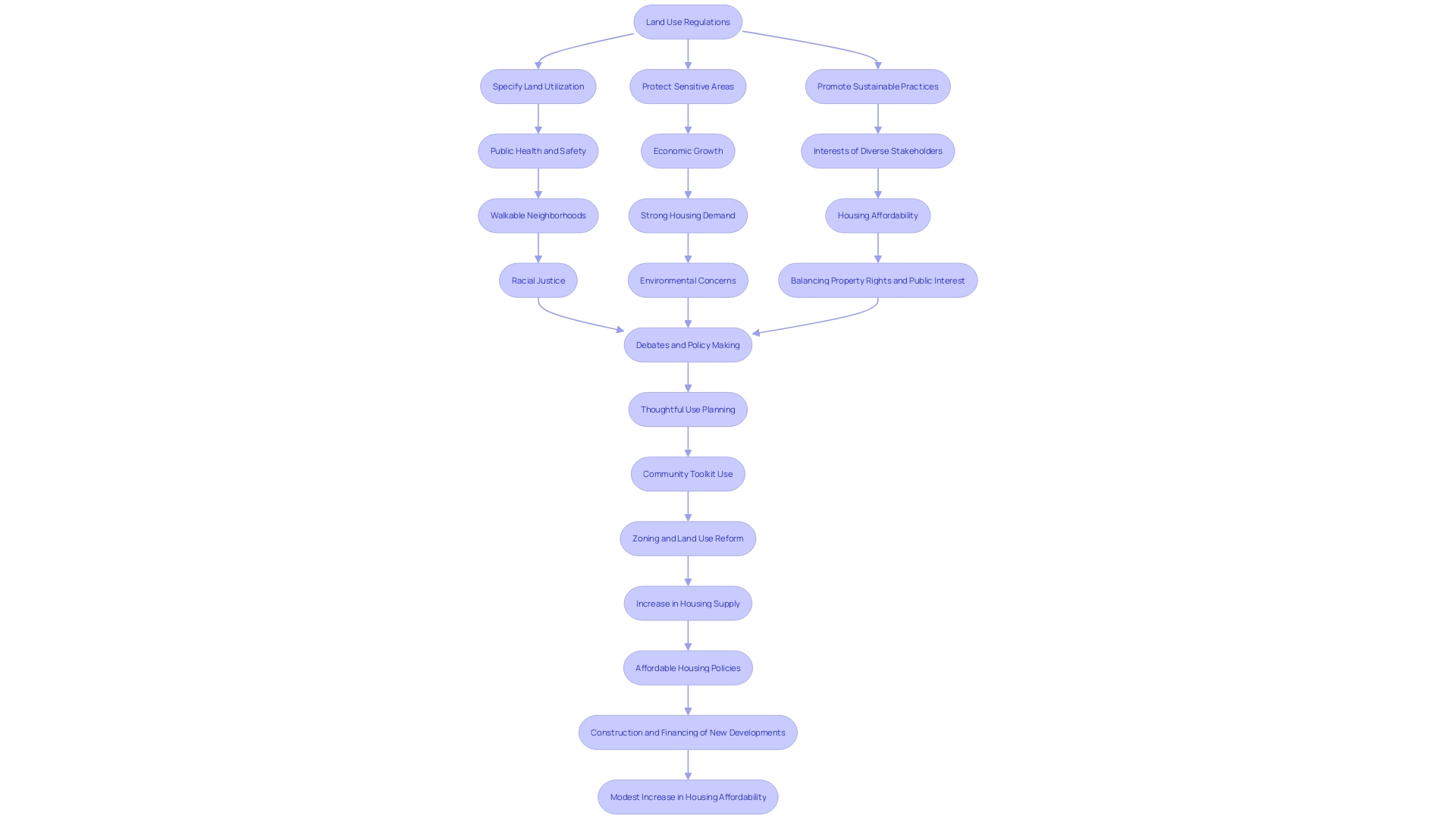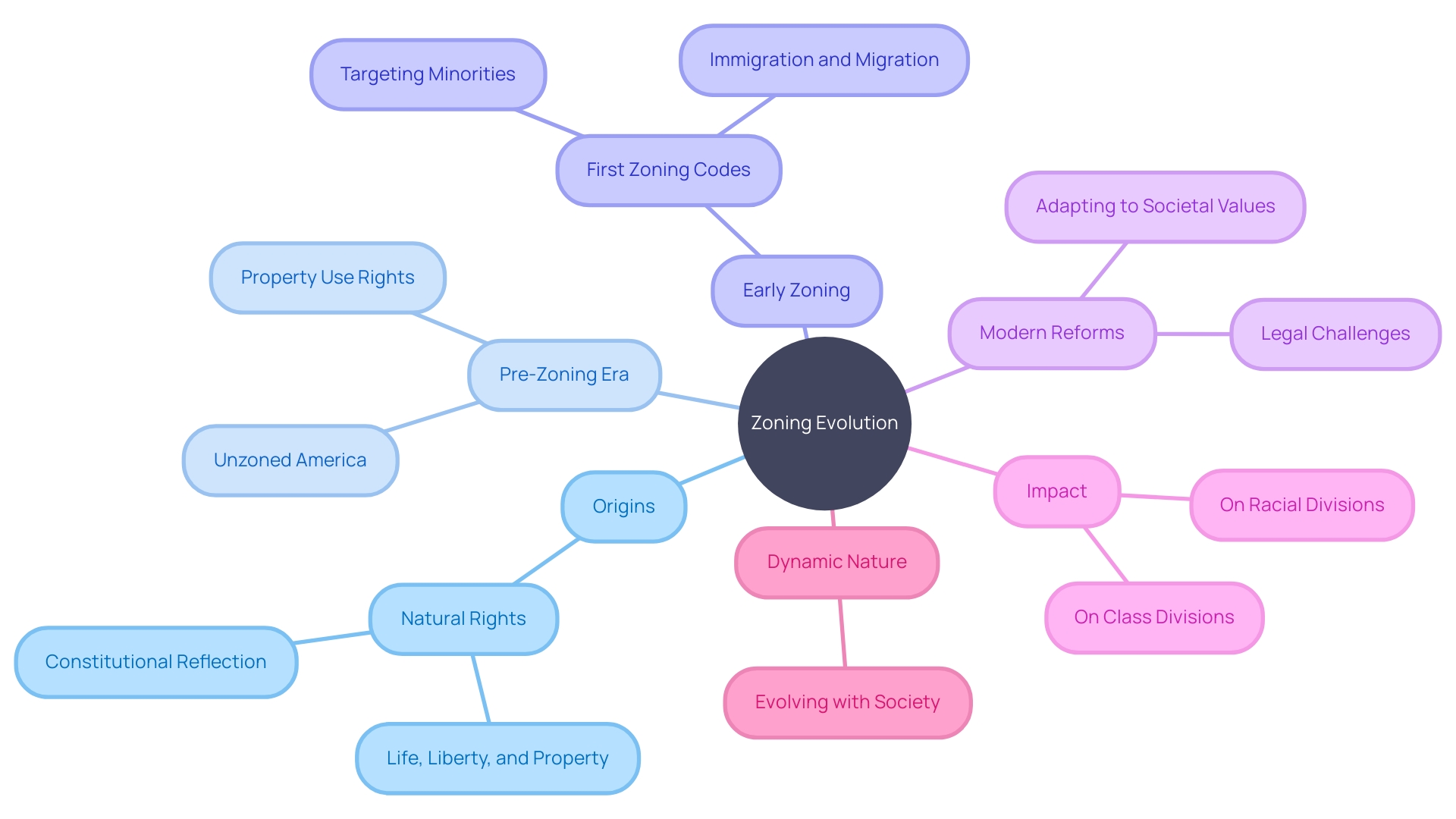Introduction
Land use laws play a crucial role in shaping communities, promoting sustainable development, and protecting public welfare. These regulations, implemented by local governments, dictate how land can be used, ensuring that development aligns with the community's needs while safeguarding property rights. Moreover, they promote environmental conservation and uphold public health and safety standards.
By designating zones for different activities, such as commercial and industrial use, land use laws also foster economic growth and job creation. However, the balance between private property rights and public interest remains a central theme in land use debates. This article explores the purpose of land use laws, key principles that guide their implementation, different types of land use regulations, and the role of zoning ordinances in community development.
It also examines the challenges and implications associated with these regulations and highlights recent developments and reforms in land use planning. Overall, land use laws are dynamic and reflect a community's evolving priorities, striving to achieve responsible land utilization and harmonious development.
The Purpose of Land Use Laws
Local governments enforce regulations on land utilization to influence the growth of neighborhoods and guarantee the well-being of the public. These regulations are crucial for establishing structured and effective growth, avoiding the disarray of spontaneous expansions that can have negative impacts on the social structure of a locality. By specifying how the territory can be utilized, they ensure that progress corresponds to the requirements of the community while protecting ownership rights by precisely defining permissible land applications. Moreover, they are instrumental in environmental conservation, dictating measures to protect sensitive areas and endorsing sustainable practices.
Land use laws also uphold public health and safety by mandating that developments comply with specific standards, including the provision of infrastructure and public services. In the economic sphere, they catalyze growth by designating zones for commercial and industrial activities, fostering job creation and business opportunities. The primary objective of these regulations is to synchronize the interests of diverse stakeholders, including property owners, inhabitants, and the ecological system, to encourage accountable land usage.
A glimpse at Somerville, Massachusetts, with its walkable neighborhoods and strong demand for housing, illustrates the impact of thoughtful use planning. In contrast, the Provincial Planning Statement 2024 of Ontario, Canada, highlights comprehensive policies addressing housing, development, and environmental protection. Additionally, these regulations are not fixed; the development of zoning in Minneapolis, motivated by concerns of housing affordability, racial justice, and environmental issues, demonstrates the dynamic character of use policy reform.
Yet, the stark reality is that nearly half of all rental households in the U.S. are burdened by housing costs, a situation exacerbated by restrictive zoning regulations. Additionally, the principle of 'whiteness as property,' which historically influenced zoning laws, underscores the need for fair use policies. As discussions on eminent domain and regulatory restrictions continue, the balance between private property rights and public interest remains a central theme in use debates.

Key Principles of Land Use Laws
Implementing efficient regulations is crucial for shaping sustainable societies and assisting regions in controlling expansion and transformation. These laws are constructed on principles that direct their implementation and enforcement, guaranteeing they serve the society's best interests. Comprehensive planning is foundational to use laws, with long-term visions that account for population growth, infrastructure, and environmental concerns. Adaptability is also crucial, as laws must evolve to meet new challenges and opportunities. Public participation is a cornerstone of these laws, as it involves community members in the decision-making process through hearings and meetings, ensuring the regulations reflect the community's needs and desires.
Consistency and predictability in the application of land use laws prevent arbitrary decisions, fostering fairness and trust in the system. Balancing conflicting concerns, such as property rights, economic progress, and environmental preservation, is a delicate task that necessitates careful decision-making. These principles are not just theoretical; they have real-world implications and challenges, as seen in various case studies and legislative actions.
For instance, eminent domain's use to transfer private property for 'public' projects, versus private ones, raises significant concerns about property rights and economic development. Zoning rules, particularly those that restrict housing construction, present another layer of complexity. Regulatory restrictions on property use, like those in response to increasing wildfire risks, often involve trade-offs, such as higher costs for safety improvements. Cities like Houston utilize distinctive approaches like restrictive covenants for use regulation, showcasing the diversity of strategies that exist.
Community groups play a vital role in shaping the use principles that advance equity and access, particularly for marginalized groups. This is evident through toolkits designed to help groups create principles that reflect their specific needs and resources. Legislation that introduces density goals near transit lines demonstrates efforts to incentivize denser building in certain areas, addressing housing supply issues. Such laws are not fixed; they are constantly influenced by various factors, from safety standards to housing regulations at the municipal level, highlighting the need for a nuanced understanding of these regulations to effectively manage use.
Types of Land Use Regulations
Land use regulations establish the foundation of urban planning, determining how property can be utilized to align with the objectives of societal growth and environmental stewardship. Zoning regulations are crucial, classifying areas into separate districts to control allowed actions, thus influencing the layout and nature of the locality. Subdivision regulations come into play when property is divided for development, ensuring that each parcel meets standards for essential services and infrastructure.
In crafting a resilient community, building codes are essential, establishing the blueprint for construction and maintenance that prioritizes safety and sustainability. Environmental regulations take a forward-looking approach by safeguarding natural resources, mandating strategies for environmental conservation, and protecting biodiversity.
Historic preservation regulations serve as a cultural keystone, protecting structures and sites of historical significance from unwarranted alteration or destruction. Yet, these regulations are not without their challenges and implications. For instance, minimum lot size requirements can inflate housing costs, constraining both buyers and existing homeowners, as seen in cities like Dallas with a prevalent minimum lot size of 7,500 square feet.
Moreover, the nuanced interplay between property rights and zoning is evident in the historical context of race and land-use law. The right to exclude, a critical aspect of property rights, has shaped societal perceptions of race and property, influencing zoning practices well into the modern era. This is reflected in landmark cases, such as Plessy v. Ferguson and Shelley v. Kraemer, which have had a lasting impact on the American legal landscape.
The intricacy of navigating municipal codes across thousands of local governments poses a daunting task for those in the realm of property acquisition. Despite advancements in legal frameworks and technology, accurately deciphering and applying these regulations remains a significant challenge.
Recent advancements highlight the ever-changing character of urban planning. For example, the Provincial Planning Statement (PPS), 2024, emphasizes the integration of housing, progress, and infrastructure while safeguarding environmental and cultural resources. The City of Eugene's recent policy adjustments illustrate how local governments can adapt regulations, such as off-street parking requirements, to meet contemporary needs while mitigating environmental impacts.
Essentially, the regulations concerning the use of property are not simply fixed guidelines but rather a reflection of a society's changing priorities, striking a balance between progress and the necessity to protect both the constructed and ecological surroundings.
Zoning Ordinances and Land Use Planning
Zoning ordinances act as the architectural plan for development, dividing areas into distinct zonesâresidential, commercial, industrial, agriculturalâeach controlled by its own set of rules. These ordinances are more than lines on a map; they are the embodiment of strategic urban planning, considering factors like population density, infrastructure, and environmental impact to ensure harmonious land utilization. Zoning not only addresses the present aesthetics and functionality of neighborhoods but also emphasizes sustainable, long-term growth.
Historically, zoning has been a tool for both order and exclusion, with its roots intertwined with America's foundational values of "life, liberty, and property." Yet, it has also been wielded to perpetuate inequality, a vestige of the era when property rights encompassed the right to exclude, shaping racial and class divisions through land-use decisions. Cases like the 1916 racial zoning ordinance in St. Louis and the Village of Euclid v. Ambler Realty Company underscore this dark legacy, which modern zoning reforms seek to redress.
Recent advancements, like St. Paul's zoning code amendment to permit higher density housing in formerly single-family zones, reflect a nationwide transition towards more inclusive zoning practices. This move parallels California's statewide zoning reforms aimed at addressing housing shortages, illustrating a transformation in zoning ideology—from a restrictive to an enabling force for equitable community development.
In understanding zoning, one must recognize that it is not merely a static system of rules but a dynamic framework that evolves with societal values and legal challenges. As Brian J. Connolly suggests, the defense and implementation of zoning reforms require a nuanced understanding of the legal landscape. Zoning is ultimately a reflection of our collective priorities, shaping the very spaces we inhabit and the opportunities available within them.

Conclusion
In conclusion, land use laws are crucial for shaping communities, promoting sustainable development, and protecting public welfare. These regulations ensure that development aligns with community needs while safeguarding property rights. They also promote environmental conservation, public health, and safety standards.
By designating zones for different activities, land use laws foster economic growth and job creation.
The key principles guiding land use laws include comprehensive planning, adaptability, public participation, consistency, and balancing competing interests. They help create sustainable communities and manage growth effectively. However, challenges arise, such as restrictive zoning regulations contributing to housing cost burdens and historical influences on zoning laws highlighting the need for equitable land use policies.
Different types of land use regulations, including zoning ordinances, subdivision regulations, building codes, environmental regulations, and historic preservation regulations, play a crucial role in harmonizing community development and environmental stewardship. However, they also present challenges, such as minimum lot size requirements inflating housing costs and the complexity of navigating municipal codes across local governments.
Zoning ordinances serve as the blueprint for community development, delineating land into specific zones with their own regulations. They embody strategic urban planning, aiming for harmonious land utilization. Recent developments show a shift towards more inclusive zoning practices, aiming for equitable community development.
In essence, land use laws reflect a community's evolving priorities and strive for responsible land utilization, harmonious development, and the preservation of both the built and natural environment. Understanding the complexities and implications of these regulations is essential for effectively managing land use and creating sustainable and equitable communities.




